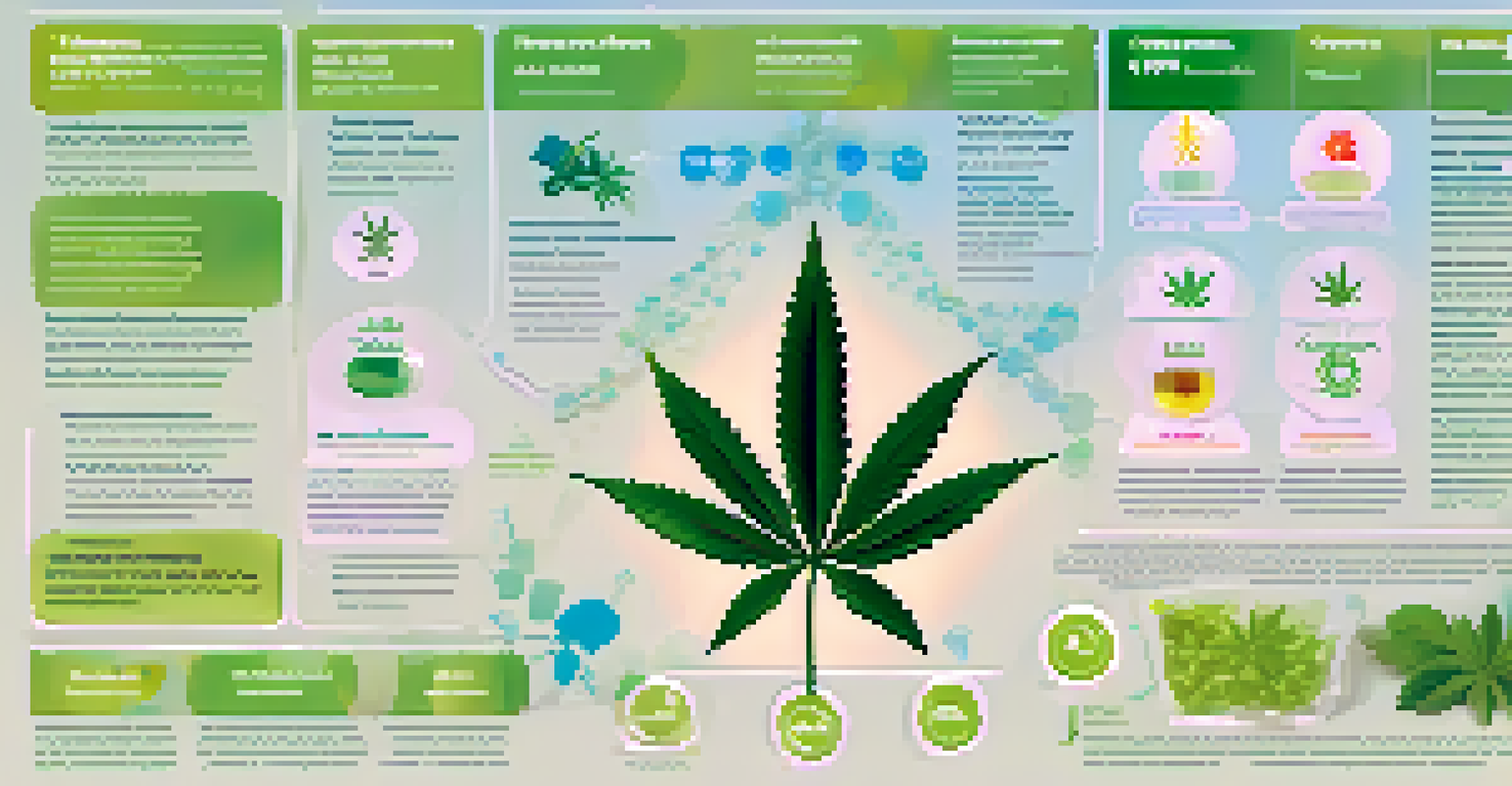Curriculum Development for Marijuana Education in Schools

Understanding the Need for Marijuana Education in Schools
As marijuana laws evolve, educating students about its effects becomes crucial. With increasing accessibility, young people need accurate information to make informed decisions. Schools have a responsibility to provide this education, addressing both the potential risks and benefits of marijuana use.
Education is the most powerful weapon which you can use to change the world.
Many students may encounter marijuana in social settings, making it essential for them to have a clear understanding of what it is. Education can dispel myths and reduce stigma, encouraging open conversations about substance use. By integrating marijuana education into the curriculum, schools can foster a safer and more informed community.
Moreover, proper education on marijuana can help combat misinformation prevalent in society. As students learn about the science behind marijuana, they can develop critical thinking skills. This empowers them to navigate discussions around cannabis with confidence and clarity.
Key Objectives of Marijuana Education Curriculum
The primary goal of a marijuana education curriculum should be to inform students about the substance without promoting its use. This includes understanding its chemical composition, effects on the body, and legal implications. Setting clear objectives ensures that the curriculum is both educational and responsible.

Additionally, fostering life skills such as decision-making and peer resistance techniques is crucial. Students should learn how to evaluate risks and make choices aligned with their values. This empowers them to handle peer pressure and approach situations involving marijuana with a thoughtful mindset.
Importance of Marijuana Education
Educating students about marijuana is essential to help them make informed decisions and understand its potential risks and benefits.
Finally, it's important to address the social and cultural factors surrounding marijuana use. Engaging students in discussions about societal norms and health impacts can create a more comprehensive understanding. This holistic approach encourages students to consider marijuana use within a broader context of health and wellness.
Incorporating Evidence-Based Research in Curriculum Design
When developing a marijuana education curriculum, it's essential to base content on credible, evidence-based research. This ensures that students receive accurate and up-to-date information about marijuana. Incorporating studies from reputable sources can lend credibility to the curriculum and enhance learning outcomes.
An investment in knowledge pays the best interest.
By including statistics on marijuana use trends and health effects, educators can provide a realistic perspective on the substance. For example, discussing the differences between medicinal and recreational use can help students understand the complexity surrounding marijuana. This informed approach allows for richer classroom discussions and critical analysis.
Furthermore, utilizing case studies and real-life examples can make the material relatable. Students may be more engaged when they see how marijuana use impacts individuals and communities. This connection to real-world scenarios strengthens their understanding and retention of the material.
Strategies for Engaging Students in Learning
Engaging students in marijuana education requires innovative teaching strategies that resonate with their interests. Incorporating multimedia resources, such as videos and interactive activities, can enhance learning experiences. This dynamic approach keeps students interested and encourages active participation in discussions.
Group discussions and debates can also foster critical thinking. Allowing students to express their opinions and challenge each other's views promotes a deeper understanding of marijuana-related issues. These collaborative activities nurture a sense of community and respect for differing perspectives.
Engaging Teaching Strategies
Incorporating multimedia resources and interactive activities can enhance student engagement and foster critical thinking about marijuana-related issues.
Additionally, inviting guest speakers, such as health professionals or law enforcement officers, can provide real-world insights. Hearing from experts can validate the importance of the topic and motivate students to engage more deeply. These diverse perspectives enrich the classroom experience and encourage thoughtful dialogue.
Addressing Legal and Social Implications of Marijuana Use
As marijuana legalization continues to spread, understanding its legal implications is vital for students. Educators should cover local laws and regulations surrounding marijuana use, emphasizing the importance of compliance. This knowledge helps students navigate their rights and responsibilities in a changing legal landscape.
Moreover, discussing the social implications of marijuana use can help students critically assess its impact on communities. Topics like social equity and public health can foster deeper conversations about the consequences of legalization. Students can explore how marijuana policies affect different demographics and advocate for informed change.
By integrating discussions on the legal and social dimensions, educators prepare students to be responsible citizens. They learn to evaluate not only the substance itself but also the broader societal issues related to its use. This comprehensive approach encourages civic engagement and social responsibility.
Training Educators for Effective Marijuana Education
For a marijuana education curriculum to be successful, teachers must be adequately trained. Professional development programs can equip educators with the knowledge and skills needed to teach about marijuana effectively. This includes understanding the latest research, legal updates, and best practices in delivering sensitive content.
Additionally, providing educators with resources and support fosters confidence in discussing marijuana-related topics. Creating a network of teachers who share strategies and experiences can enhance the overall curriculum effectiveness. This collaborative environment encourages continuous improvement and adaptation to student needs.
Training for Educators
Proper training for educators is crucial to effectively teach marijuana education and create a safe space for open discussions.
Moreover, training should also emphasize the importance of creating a safe space for discussions. Educators must be prepared to handle sensitive topics and support students who may have personal experiences with marijuana. By fostering an inclusive classroom environment, educators can encourage open dialogue and respect.
Evaluating the Effectiveness of Marijuana Education Programs
Regular evaluation of marijuana education programs is essential to ensure their effectiveness. Schools should implement assessments to measure students' knowledge and attitudes before and after the curriculum. This data helps identify areas for improvement and validates the program's impact.
Feedback from students and educators can also provide valuable insights. Surveys and focus groups can reveal what aspects of the curriculum resonate well and what may need adjustment. This iterative process allows for ongoing refinement and adaptation to meet students' evolving needs.

Moreover, sharing successful outcomes with the broader community can enhance support for marijuana education. By showcasing positive changes in student behavior and attitudes, schools can advocate for continued investment in these programs. This transparency builds trust and encourages collaboration with parents and local organizations.